Related Research Articles
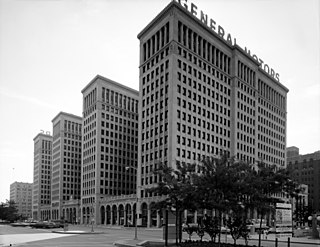
The General Motors streetcar conspiracy refers to the convictions of General Motors (GM) and related companies that were involved in the monopolizing of the sale of buses and supplies to National City Lines (NCL) and subsidiaries, as well as to the allegations that the defendants conspired to own or control transit systems, in violation of Section 1 of the Sherman Antitrust Act. This suit created lingering suspicions that the defendants had in fact plotted to dismantle streetcar systems in many cities in the United States as an attempt to monopolize surface transportation.

National City Lines, Inc. (NCL) was a public transportation company. The company grew out of the Fitzgerald brothers' bus operations, founded in Minnesota, United States, in 1920 as a modest local transport company operating two buses. Part of the Fitzgerald's operations were reorganized into a holding company in 1936, and later expanded about 1938 with equity funding from General Motors, Firestone Tire, Standard Oil of California and Phillips Petroleum for the express purpose of acquiring local transit systems throughout the United States in what became known as the General Motors streetcar conspiracy. The company formed a subsidiary, Pacific City Lines in 1937 to purchase streetcar systems in the western United States. National City Lines, and Pacific City Lines were indicted in 1947 on charges of conspiring to acquire control of a number of transit companies, and of forming a transportation monopoly for the purpose of "conspiring to monopolize sales of buses and supplies to companies owned by National City Lines." They were acquitted on the first charge and convicted on the second in 1949.

The Hamilton Street Railway (HSR) is the public transport agency for Hamilton, Ontario. The name is a legacy of the company's early period, when public transit in Hamilton was primarily served by streetcars. Although streetcars are no longer used in the city today, the HSR operates bus and paratransit services, with a ridership of 21 million passengers a year.
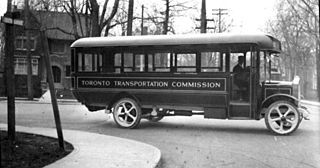
Toronto Transportation Commission (TTC) was the public transit operator in Toronto, Ontario, Canada, beginning in 1921. It operated buses, streetcars and the island ferries. The system was renamed the Toronto Transit Commission (TTC) in 1954.
The Yellow Coach Manufacturing Company was an early manufacturer of passenger buses in the United States. Between 1923 and 1943, Yellow Coach built transit buses, electric-powered trolley buses, and parlor coaches.

Kenosha Area Transit is a city-owned public transportation agency based in Kenosha, Wisconsin.
The Transit Museum Society of British Columbia (TMS) is dedicated to the restoration and preservation of decommissioned transit vehicles in Vancouver and the adjoining areas. Based in Langley, the Society currently has a fleet of seventeen vehicles: fifteen operational and two non-operational. These vehicles were previously in use by both public and private operating companies between 1937 and 2021.
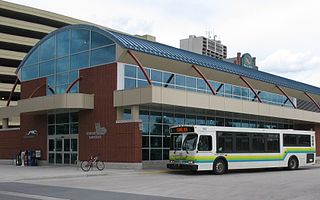
Transit Windsor provides public transportation in the city of Windsor, Ontario, Canada as well as LaSalle, Essex, Kingsville, Amherstburg and Leamington and serves more than 6 million passengers each year, covering an area of 310 km2 (120 sq mi) and a population of 235,000. They operate a cross border service between the downtown areas of Windsor and Detroit, Michigan via the Tunnel Bus, and service to events at Detroit's Comerica Park, Little Caesars Arena, Huntington Place, and Ford Field. The Windsor International Transit Terminal neighbours with the Windsor International Aquatic and Training Centre.

The Louisville Railway Company (LRC) was a streetcar and interurban rail operator in Louisville, Kentucky. It began under the name Louisville City Railway in 1859 as a horsecar operator and slowly acquired other rival companies. It was renamed in 1880 following the merger of all Mule operations as the Louisville Railway Company. All tracks were 5 ft gauge.

Streetcars or trolley(car)s were once the chief mode of public transit in hundreds of North American cities and towns. Most of the original urban streetcar systems were either dismantled in the mid-20th century or converted to other modes of operation, such as light rail. Today, only Toronto still operates a streetcar network essentially unchanged in layout and mode of operation.
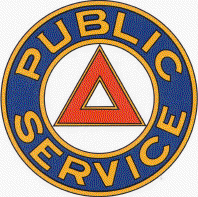
Transport of New Jersey (TNJ), earlier Public Service Transportation and then Public Service Coordinated Transport, was a street railway and bus company in the U.S. state of New Jersey from 1917 to 1980, when NJ Transit took over their operations. It was owned by the Public Service Corporation, now the Public Service Electric and Gas Company.
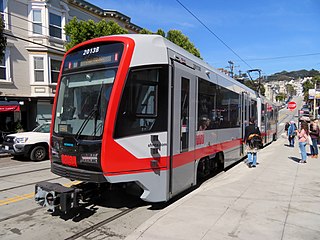
With five different modes of transport, the San Francisco Municipal Railway runs one of the most diverse fleets of vehicles in the United States. Roughly 550 diesel-electric hybrid buses, 300 electric trolleybuses, 250 modern light rail vehicles, 50 historic streetcars and 40 cable cars see active duty.

The Oregon Electric Railway Museum is the largest streetcar/trolley museum in the Pacific Northwest of the United States. It is owned and operated by the Oregon Electric Railway Historical Society and is located in Brooks, Oregon, on the grounds of Powerland Heritage Park.
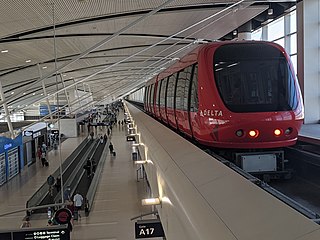
Transportation in metropolitan Detroit comprises an expansive system of roadways, multiple public transit systems, a major international airport, freight railroads, and ports. Located on the Detroit River along the Great Lakes Waterway, Detroit is a significant city in international trade, with two land crossings to Canada. Three primary Interstate highways serve the region.
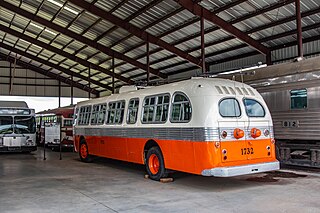
In Atlanta, Georgia, trolleybuses, generally called trackless trolleys there, were a major component of the public transportation system in the middle decades of the 20th century, carrying some 80 percent of all transit riders during the period when the system was at its maximum size. At the end of 1949 Atlanta had a fleet of 453 trolleybuses, the largest in the United States, and it retained this distinction until 1952, when it was surpassed by Chicago.

The San Francisco trolleybus system forms part of the public transportation network serving San Francisco, in the state of California, United States. Opened on October 6, 1935, it presently comprises 15 lines and is operated by the San Francisco Municipal Railway, commonly known as Muni, with around 300 trolleybuses. In San Francisco, these vehicles are also known as "trolley coaches", a term that was the most common name for trolleybuses in the United States in the middle decades of the 20th century. In 2023, the system had a ridership of 42,240,000, or about 204,700 per weekday as of the first quarter of 2024.

The Dayton trolleybus system forms part of the public transportation network serving Dayton, in the state of Ohio, United States. Opened on April 23, 1933, it presently comprises five lines, and is operated by the Greater Dayton Regional Transit Authority, with a fleet of 45 trolleybuses. In 2023, the system had a ridership of 2,163,400, or about 6,000 per weekday as of the first quarter of 2024.

The Philadelphia trolleybus system forms part of the public transportation network serving Philadelphia, in the state of Pennsylvania, United States. It opened on October 14, 1923, and is now the second-longest-lived trolleybus system in the world. One of only four such systems currently operating in the U.S., it presently comprises three lines and is operated by the Southeastern Pennsylvania Transportation Authority (SEPTA), with a fleet of 38 trolleybuses, or trackless trolleys as SEPTA calls them. The three surviving routes serve North and Northeast Philadelphia and connect with SEPTA's Market–Frankford rapid transit line.
References
- ↑ Caro, Robert A. (1974). The Power Broker: Robert Moses and the Fall of New York. NY: Vintage Books (Random House). pp. 934–9.
- ↑ Barnes, Stanley N. (May 2, 1955). "Request for Further Investigation of the Motor Bus Industry - The Greyhound Corporation". Office Memorandum, Antitrust Div., DOJ.
- ↑ "Yellow Truck and Coach". Fortune: 63. July 1936.
- ↑ "Mr. Thomas Chides Us". Oregonian (Ed,): 1. September 14, 1935.
- ↑ "Committee Quizes Bus Operators". Oregon Journal. 19 April 1935.
- ↑ "Coach Company 'Roots' Traced". News-Telegram. 19 April 1935.
- ↑ Bianco, Martha. "Profit vs Public Service: Competing Demands in Urban Transportation History & Politics, Portland, OR, 1872-1970". UMI Dissertation Services.
- ↑ "Heard of Bus Firm Coming". (Bloomington-Normal) Daily Pantograph. 26 July 1936.
- ↑ "New Bus Schedules Raise Councils's Ire". (Bloomington-Normal) Daily Pantograph. 15 August 1936.
- ↑ Ford Motor Company (June 1946). "Transportation Survey, Greater City of Victoria, British Columbia": 16.
{{cite journal}}: Cite journal requires|journal=(help) - ↑ Barnes, Stanley N. (May 2, 1955). "Request for Further Investigation of the Motor Bus Industry - The Greyhound Corporation". Office Memorandum, Antitrust Div., DOJ.
- ↑ Miklos, Frank S. (July–December 2001). "Newark City Subway". Headlights: 23.
- ↑ "Public Service Coordinated Transport History". Motor Coach Age. October 1974.
- ↑ "John G. Campbell, 59, Dies, Ex Head of Buffalo Transit". Buffalo Evening News. 13 February 1962.
- ↑ "Street Cars to Make Last Runs This Evening". Jamestown Morning Post (29 January 1938).
- ↑ Gamble, Adrian (20 January 2017). "Buffalo's 180-Year Streetcar History Linked to the City's Changing Fortunes". Skyrise Cities.
- ↑ "Social News". Miami News: 10. 14 March 1949.
- ↑ Wilkins, Van (May–June 1990). "Louisville (1923 to 1945)". Motor Coach Age. p. 20
- ↑ "Five Chicagoans Injured at Herrington Lake Blaze". Cincinnati Enquirer: 1. March 14, 1938.
- ↑ "Norman P. Smith of Lexington is Bus and Cab Magnate At 35". Courier-Journal: 14. April 23, 1940.
- ↑ "You Can't Get Coaches to Deliver? Buy Yourself a Property!". Mass Transportation: 374. December 1945.
- ↑ "State Approves Transit Line Sale". Savannah Morning News: 10. 28 December 1945.
- ↑ Engineers' Task Force for Transit Evaluation (February 14, 1964). "A Seattle Transit System Report": 3.
{{cite journal}}: Cite journal requires|journal=(help)